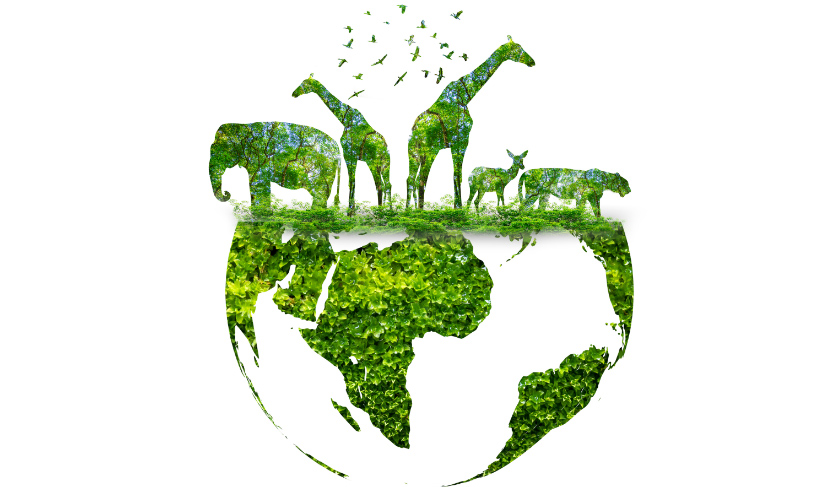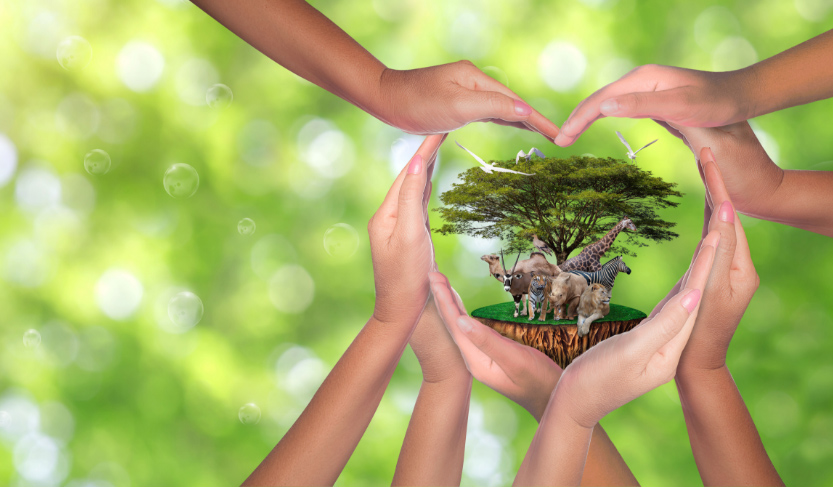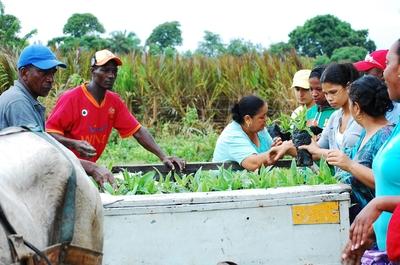
Biodiversity, Causes, and Solutions
“Know that the order and perfection of the universe require that existence should appear in countless forms.... There must be differences of degrees and stations, of kinds and species, for existence to shine forth with the utmost perfection.”

What is biodiversity, why is it significant, and how does it function today? In the previous blog, we looked at biodiversity and the impacts of its loss on the ecosystem and public health. We will now look more closely at ways to protect wildlife on planet Earth. In light of the significance of forests in this context, it is crucial to identify and restore biodiversity hotspots and understand how individual actions can significantly impact the protection of all species.

The Causes of Biodiversity Loss
Biodiversity loss is directly and sometimes indirectly caused by human activities. Some of its factors are reviewed here:
1- Deforestation:
Deforestation is one of the most critical factors causing biodiversity loss. By deforestation, biodiversity will be reduced in different ways, including:
Habitat loss: Deforestation can lead to the direct loss of wildlife habitat. It is identified as a major threat to 85% of all species described as endangered on the IUCN Red List. Removing trees and other vegetation types reduces food, shelter, and animal breeding habitat.
Habitat fragmentation: Habitat fragmentation involves the division of a continuous area of the forest into multiple patches. Smaller patches of forest can support fewer animals, and smaller populations are at more risk of extinction.
More interaction between humans and wildlife: Increasing wild animals' contact with humans - as a result of deforestation - can reduce the number of species and even cause extinction, due to more hunting, more road accidents, etc.
Changes in the structure of the canopy: The forest canopy plays an important role in blocking the sun's rays during the day and retaining heat at night. Deforestation decreases the forest's shelter, and this disturbance leads to extreme temperature fluctuations that can be harmful to animals.
2- Overexploitation (excessive hunting and fishing):
Over-harvesting aquatic or terrestrial animals causes the reduction of species and, in some cases, leads them to extinction. Humans have hunted wild animals for centuries. However, this problem has been aggravated by increased population, hunting and fishing technology advancement, and the demand for luxury goods produced from wildlife.
3- Global Warming:
Global warming has profound effects on biodiversity loss. Climate change has altered various ecosystems around the world. This has caused an increase in diseases and mass deaths of plants and animals; with each degree of warming, the risk of species extinction increases.
4- Pollution and Pesticides:
Pollution and pesticides can significantly and adversely affect plant and animal life. These toxins can quickly get into the air, soil, and water ecosystems, naturally making some species struggle to survive.
5- Pests, Diseases, and Invasive Species
More communication today has increased the rate of accidental entry of species into new areas. On the other hand, humans have brought some species to other places for food, fiber, or energy. These species are considered invasive alien species (IAS) and constitute an important threat to biodiversity.
How can we protect biodiversity?
Maintain forests and help them grow
The most important way to preserve biodiversity and keep the remaining is to maintain forests and help them grow. This requires a lot of time and finance and should be done with research and budgeting by governments and organizations. People should also preserve animal habitats, and avoid lighting fires or polluting the forests.
Plant trees
Trees provide shelter and food for many species, such as birds, animals, insects, and fungi. Trees also protect living species from the dangers of floods and storms and make the air cleaner and the soil more resistant. 8 Environmental Benefits of Planting Trees that the World Needs.

Identifying the biodiversity hotspots where many native species are losing their habitat (such as the Amazon Forest) and investing in restoring this forested part can be more helpful. In reforestation, it is very important to avoid monocultures and plant only one or a few tree species. Instead, it is required to plant a variety of regional tree species.
Choose an environmentally friendly lifestyle
We reduce air pollution by consuming wisely and modifying the type of nutrition (for example, decreasing meat consumption), buying less, using public transportation, and engaging in activities that reduce the waste of resources and carbon footprint. All these activities are steps to save animals and plants in danger of destruction.
Consume organic products
Consuming organic products and/or attending local stands or markets and buying from farmers can strengthen the local economy, support farmers' efforts for biodiversity preservation, and help use fresh products with nearly no chemical intervention.
Plant local flowers, fruits, and vegetables
Planting flowers, plants, and fruits suitable for the region in a hanging garden or yard supports the biodiversity of the area and its local ecosystem.
The Wise selection of products
Buying products and supporting the companies that are not contributing to the destruction of habitats and looking for FSC (Forest Stewardship Council), Rainforest Alliance, EU ecolabel, CE, or other eco-friendly labels on the purchasing products can have a significant effect.
Billions of animals are killed every year by the textile and clothing industry. The animals are being killed to be used in producing garments. There are so many cruelty-free or vegan options we can choose that are beautiful, comfortable, and less expensive.
Save water
Plant and animal species' lives depend on the region's fresh water. With shorter showers, turning off the water while brushing, or similar actions water will be saved.
Respect local habitats
Plants growing in parks and nature reserves play an influential role in conserving regional ecosystems. Being careful about the plants' protection and teaching it to children and pets can help in biodiversity loss reduction.
Do not hunt animals, and beware of overfishing
Hunting causes little chance of survival for many animals. Hunting has contributed to the historical extinction of animal species around the world. Overfishing is also a universal danger affecting all 391 threatened species. To protect biodiversity, hunt less & wisely. Join or form an anti-poaching organization. Be careful not to support the illegal animal trade. Do not contribute to overfishing.
Beware of social media effects
Be careful about the content of your support. When you see a post on Instagram about a wild animal being kept in a human home as a pet, do not like or share it. Report that kind of content that encourages harming animals.
Altogether…
The imperfection or destruction of one part of the universe affects its other components. The loss of biodiversity and its reduction profoundly affects humans and the world around them. Therefore, urgent, scientific, and systematic action is needed. To this end, every person should take action and contribute to building a safe life on Earth for the present and future generations.
Let's move in this direction by taking part in tree-planting initiatives.
Read Our Insightful Blog Posts

Agroforestry: Revolutionizing Farming, Empowering Farmers, and Protecting the Planet
Discover the benefits of agroforestry, a sustainable solution that supports farmers and environmental protection.

The Joy of Giving: Unveiling the Neuroscientific Reasons Behind Charitable Donations
Uncover the neuroscience behind charitable giving and discover how acts of generosity can significantly uplift your mood, enhance social bonds, and contribute to a more fulfilling life.

Nuclear Power Phase-Out in Germany: A Shift Towards Renewable Energy Sources
Join us as we discuss nuclear energy, its advantages and disadvantages, and explore Germany's nuclear power phase-out and its transition towards renewable energies.
Green Your Inbox!
With our Newsletters, Stay updated on our Stories of Change and Growth.
As a gift, get a personalised Nature E-card from PH.

